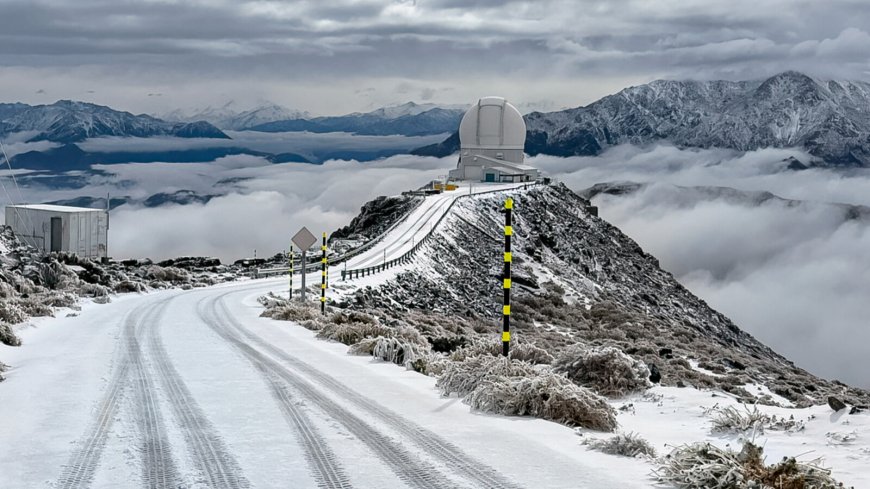Rare Snowfall Blankets SOAR Telescope in Chile - Photo of the Day July 11, 2025
A recent unexpected snowfall covered the Southern Astrophysical Research (SOAR) Telescope in Chile, providing a picturesque scene at the high-altitude Cerro Pachón peak. The 13.4-foot telescope, crucial for optical and near-infrared astronomy research in the Southern Hemisphere, was initiated in 1987 by the University of North Carolina at Chapel Hill and is now operated by an international consortium.

The SOAR Telescope on the peak of Cerro Pachón, Chile.
A recent unexpected frost graced high-altitude peaks in Chile, dusting the Southern Astrophysical Research (SOAR) Telescope with a delicate layer of snow.
What is it?
The 13.4 foot (4.1 meter) telescope has been a major hub for researchers in the Southern Hemisphere using optical and near-infrared astronomy to study the stars. According to NOIRLab, the telescope was initiated in 1987 by the University of North Carolina at Chapel Hill. It's run by an international consortium which includes Brazil, Chile, Michigan State University and the University of North Carolina.
Only a short distance away on the same peak is the Gemini South telescope, which also looks at the stars in both visible and infrared wavelengths.
Where is it?
The SOAR Telescope sits on the peak of Cerro Pachón, part of the Chilean Andes mountain range.

Why is it amazing?
Recently, a rare winter storm swept across the Atacama desert, bringing snow to the driest place on Earth. While the event created a beautiful landscape, its impact varied among the observatories located in the remote part of Chile.
For the SOAR telescope, high up in the Chilean Andes, the snow was a gentle dusting that coated the observatory, making for some stunning images.
However, lower down in elevation, the Atacama Large Millimeter/submillimeter Array (ALMA) facility at Chajnantor Plateu faced more severe conditions, forcing all scientific operations to be suspended since June 26, 2025. ALMA's remote location and reliance on sensitive electronics made it especially vulnerable to weather extremes, even brief ones.
Get the Space.com Newsletter Breaking space news, the latest updates on rocket launches, skywatching events and more! Contact me with news and offers from other Future brands Receive email from us on behalf of our trusted partners or sponsors
Want to learn more?
You can read more about telescopes like SOAR and astronomy happening in the Atacama desert.
According to the source: Space.
What's Your Reaction?
 Like
0
Like
0
 Dislike
0
Dislike
0
 Love
0
Love
0
 Funny
0
Funny
0
 Angry
0
Angry
0
 Sad
0
Sad
0
 Wow
0
Wow
0

















































































































































































